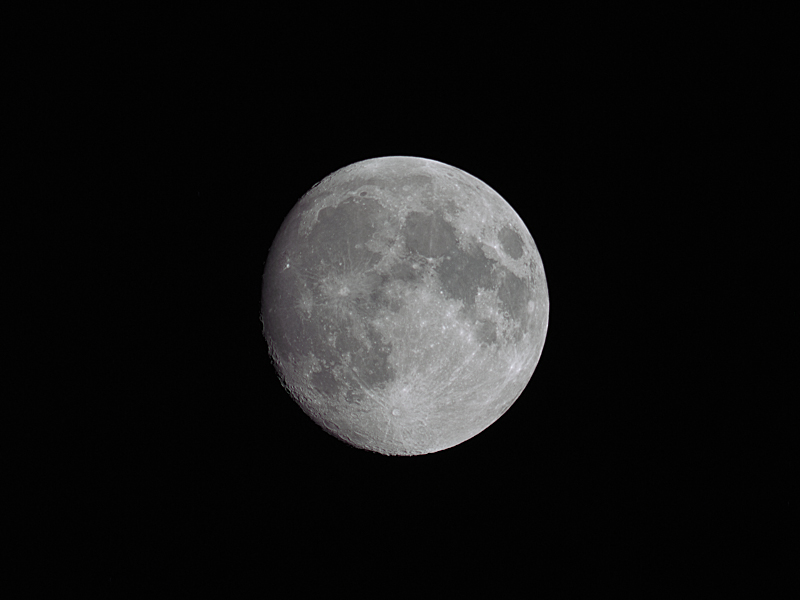
Telescope: ES DHL Comet Hunter MN6 at f/4.8, Orion Atlas EQ-G
Camera: Baader modified Nikon 610
Filter: 2” Radian Triad Ultra Hb, OIII, Ha, SII filter
Exposure: 32x1/1000sec, ISO 1600, saved as RAW
Software: Nebulosity, Registax, Photoshop
Just a quick image of the moon taken last night while I was setting up my gear for an all-night imaging run; hence the narrow-band filter. It’s usually shear insanity to try to do any deep sky imaging with a nearly full moon in the sky and haze drifting through, but narrow-band imaging does a good job cutting through the crud as long as you select suitable targets like emission and planetary nebula. The main target for last night was M17, the Swan Nebula in Serpens Cauda, just a few degrees to the northeast of the moon, and later NGC 7635, the Bubble Nebula in Cassiopeia.
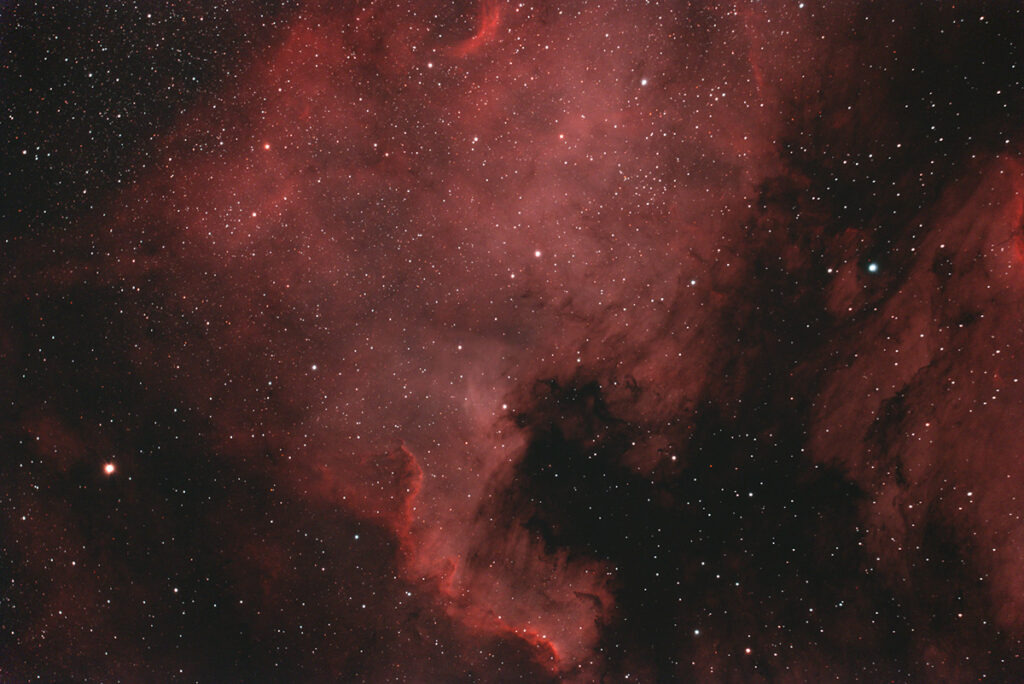
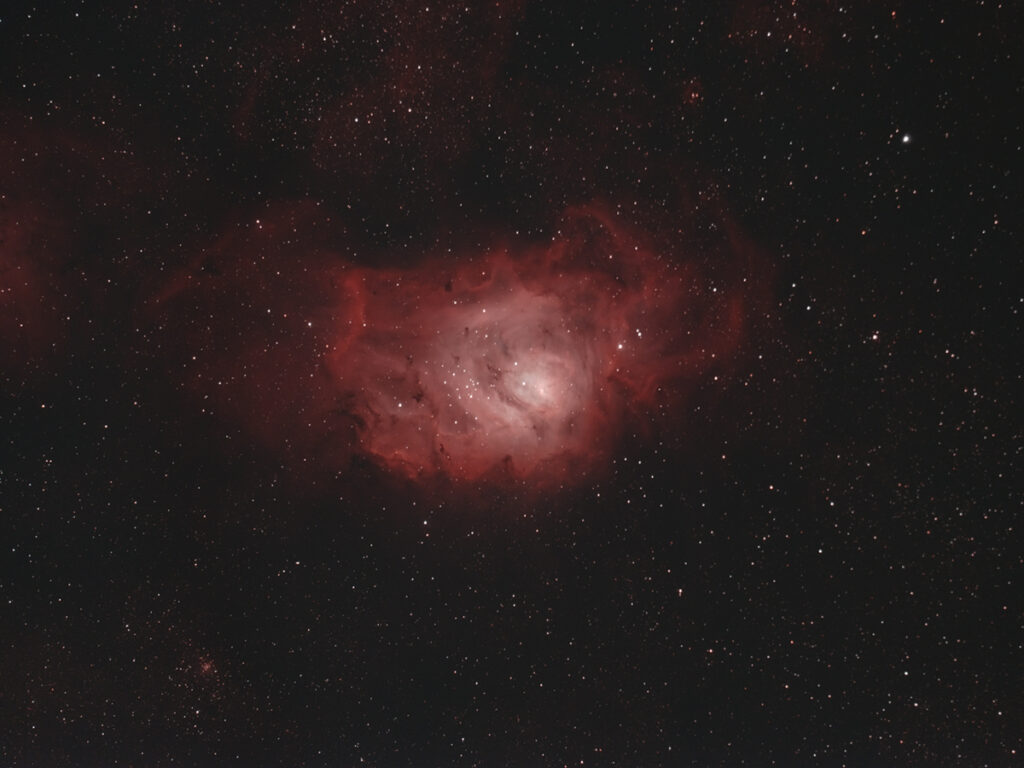

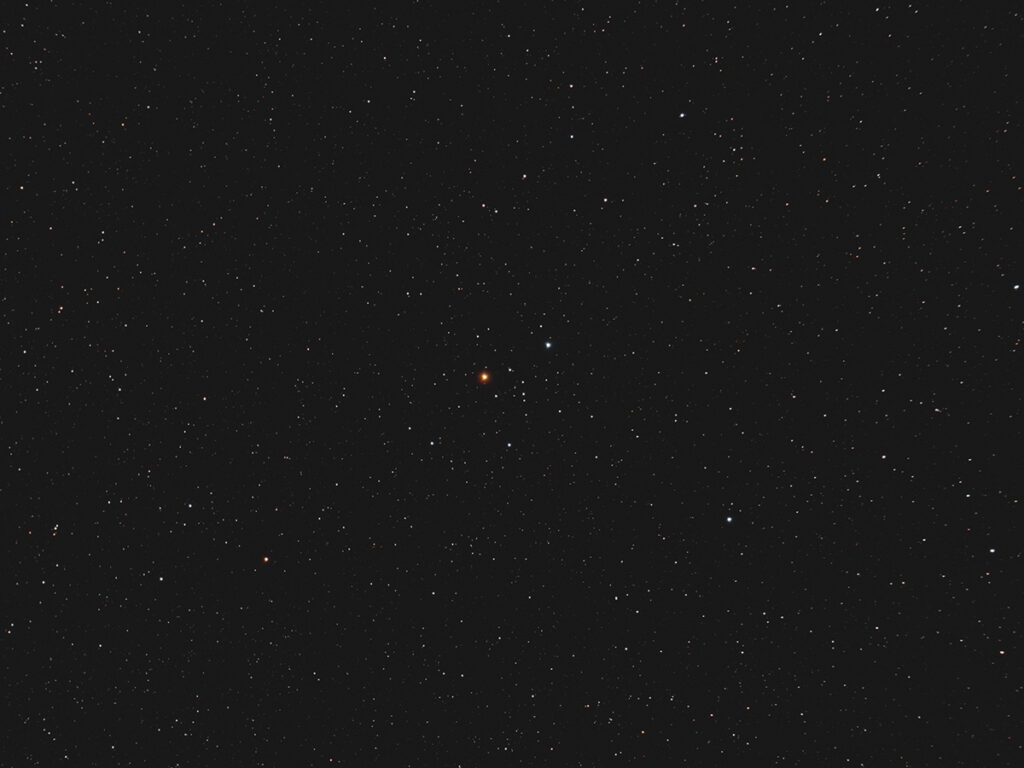
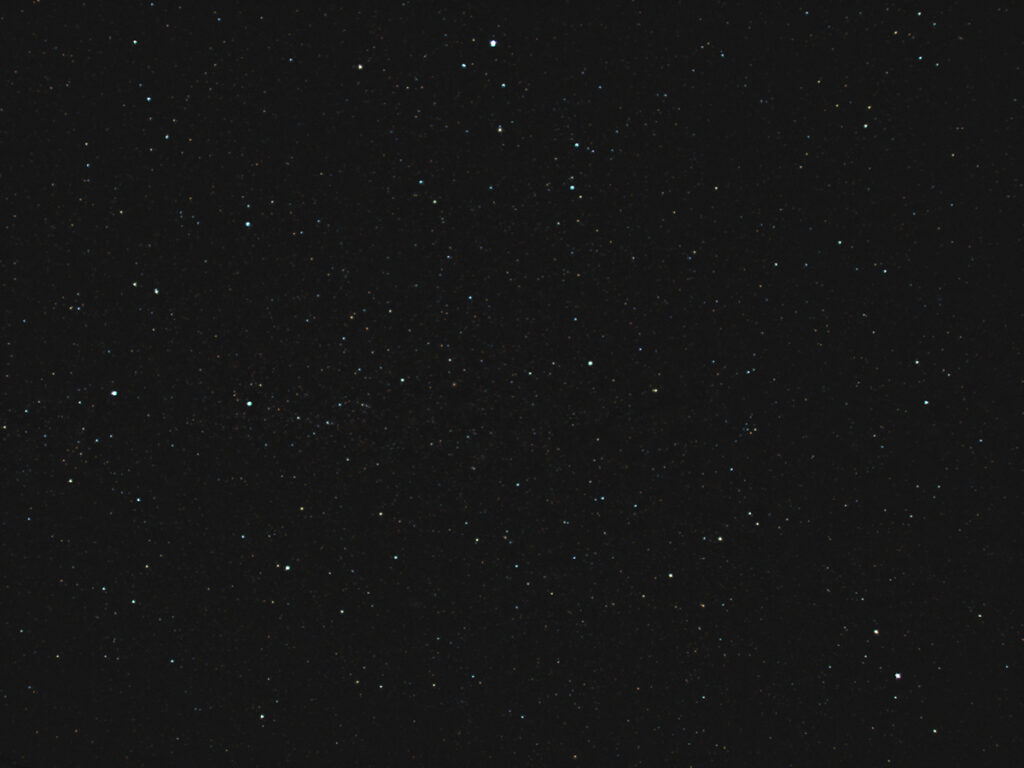

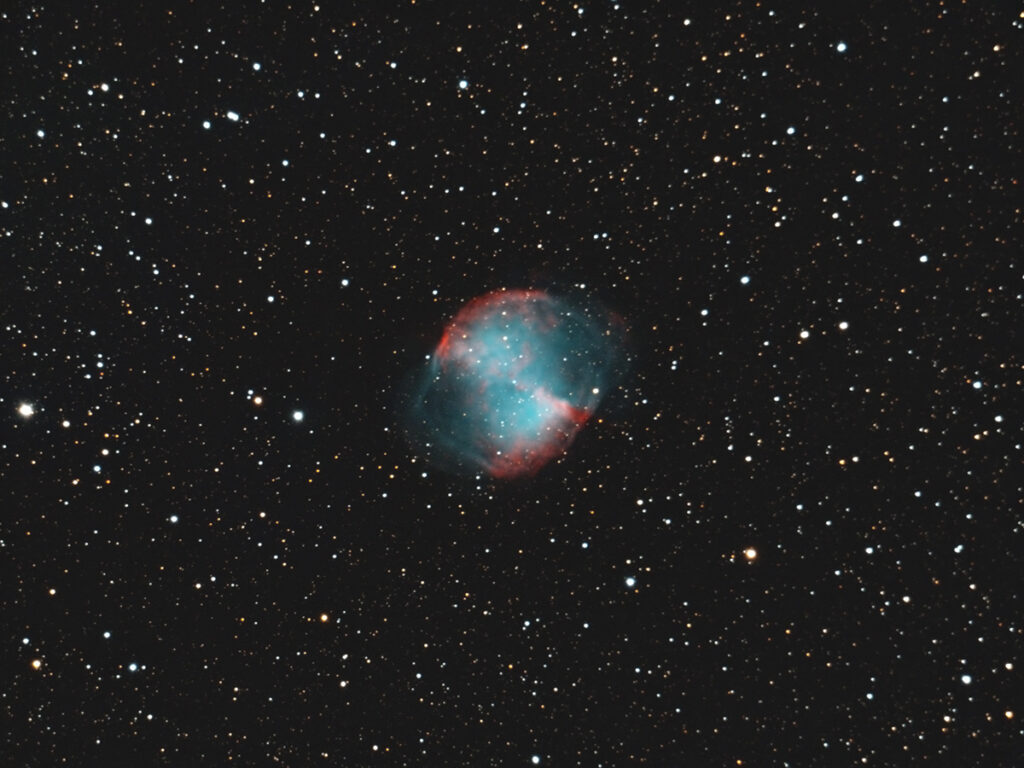
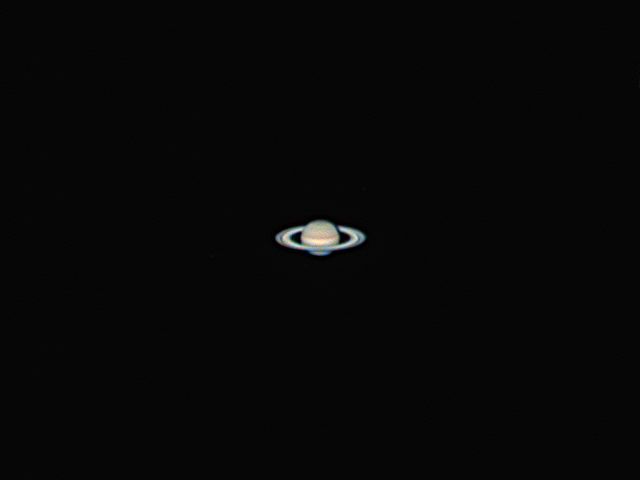
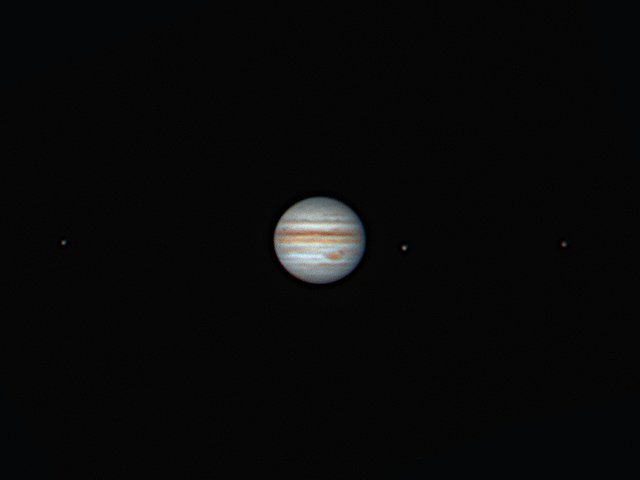

Recent Comments